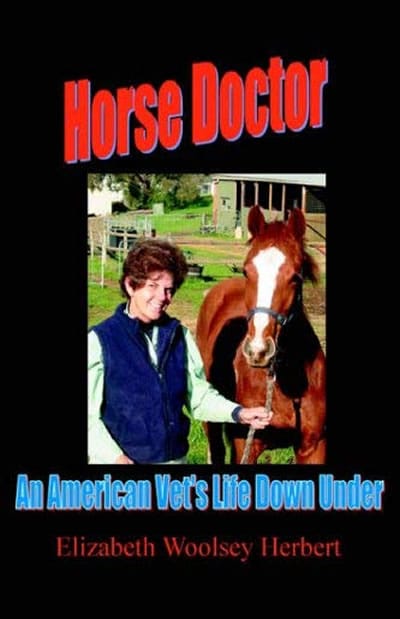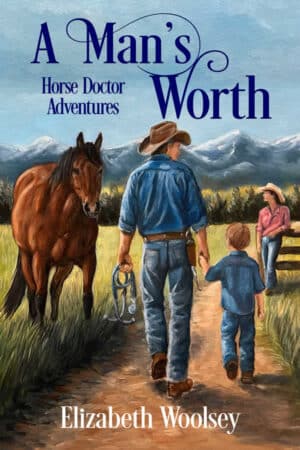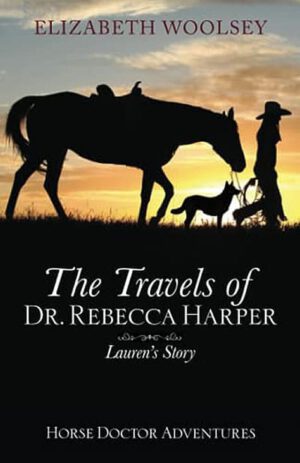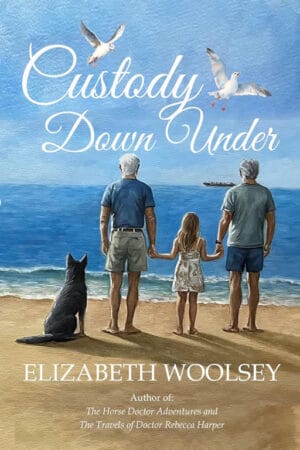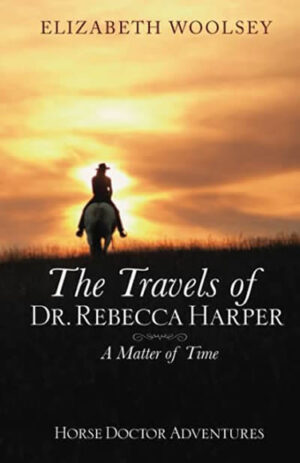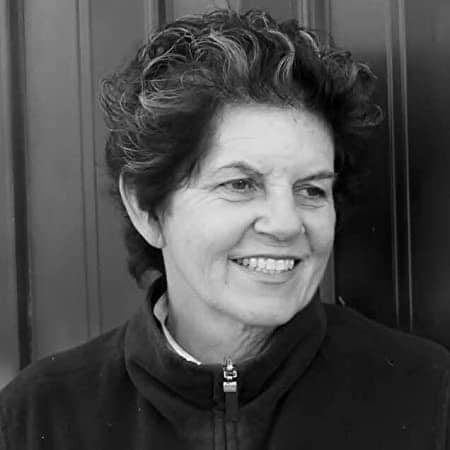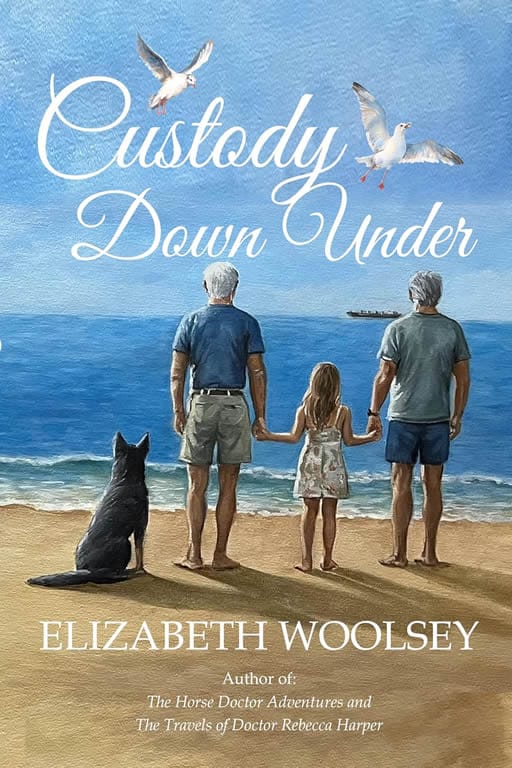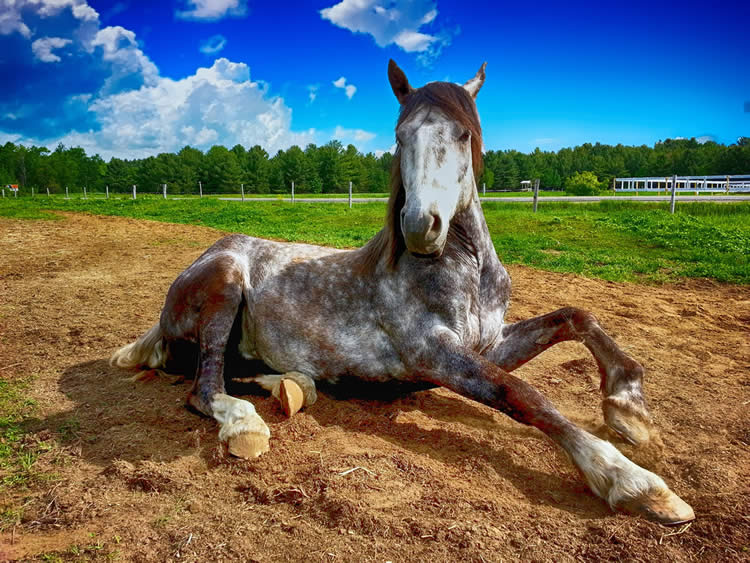Every day as I head out on my horse calls, I think, Pinch me; they are paying me to do this? One afternoon, instead of torturing my staff with “old people’s” music, I was complaining bitterly about the emergency I was driving to late in the afternoon. I was probably tired from a prior late night.
My nurse, who had to accompany me, said something like, “Well, it might be something to write in the book one day.” I wondered aloud if many people would be interested in what we did. My nurse assured me that people would be interested and that someday I should write a book. That someday came, and it was time to start writing down some of the things that were happening in my daily life here in Australia.
I’ll start with a day that occurred in our Australian springtime of October 2004. As an equine veterinarian (let’s just shorten that to “horse vet”), I am required to attend emergencies, because there are no emergency clinics for horses like there are for people or small animals.
It is often overwhelming in the foaling season. In Australia, the foaling season is between August and December. In recent years, with the proliferation of some of the breeds that aren’t under pressure for early foals (warm bloods and minis), the season has been extended to March.
During the birth process, if a mare doesn’t deliver a foal in about twenty minutes from the time she starts in active labor, there may be problems. The technical term is dystocia, which means difficult birth. I have been a veterinarian both in the United States and here in Australia.
Over my twenty-year veterinary career, I’ve averaged two dystocias per year, which require me to attempt to extract a live foal before it dies, or a dead foal before the mother dies. In mid-November 2004, I was up to my twelfth or thirteenth (I’ve lost count). With dystocias, it is important to get to the mare as quickly as possible and try to correct the position of the foal’s head or legs so the foal can be delivered.
Often, positional correction requires the use of stainless-steel chains that are passed in behind a bent leg or over the head of the foal. The chain is then looped through itself, and the leg or head is pulled into the pelvic canal. The normal foaling position is with the two front legs preceding the head in a nose-dive position through the pelvic canal.
If the leg is flexed or the elbow is hung up at the bottom of the pelvic brim, then the foal becomes stuck. The A Day in the Life 3 forces generated by the mare to expel the foal are incredible. Mares can push their intestines out the rectum or vagina in the attempt to push out a foal. This is a death sentence. So, when a foal becomes lodged, it is usually a very tight area that I work in.
Often, even with the chain around the leg, it is still hard to get the leg unbent and out. I have handles that attach to the chains, and I and whoever is helping me usually get down on the ground, with our legs planted in the mare’s thighs, and brace ourselves to pull out the body.
During one foaling this year, it took two hours to get the chain around the foal’s leg, and it still took me and two big men to straighten out the leg. Surprisingly, that foal lived. Oh, did I mention that I am approaching fifty-four years of age and that I am five feet, two inches and weigh 112 pounds? It’s just a minor detail. I may be getting on, but I am definitely not giving in to nature.
When I started my veterinary career, my first few dystocias were scary. I thought I was too little and not strong enough. However, I found that my size was usually an advantage and that my skinny arms were rarely too short. I can get in where big guys can’t. I have also developed my small brain (a matter of density) and have found ways to get around my longitudinal and strength challenges.
After a foaling, I am fairly disgusting. There are usually fetal fluids and dirt from my neck to my socks. Often there is no part of my body that isn’t either bruised or sore. My hands and arms are particularly sore and bruised from having the mare push the foal against the razor-sharp brim of her pelvis, with me in the middle.
After a dystocia, I usually take all my clothes off just inside the laundry door and head for the shower, where my hair feels like Brillo from having my hands wet and soaked in fluids for so long and having been in contact with fetal membranes for so long.
Yet I love doing dystocias, and so far this year I have been fairly successful with them. I even did a cesarean section on a miniature horse when I couldn’t get the foal out. If the foal can’t be put into position to come out, then another option is to cut it out (limb by limb) using obstetrical wire through the vagina and cervix. This is an ugly job, and not for the fainthearted.
Okay, let’s get started on the day at hand. Cue the morning music (“Morning” from the first movement of the Peer Gynt Suite), even though it is a bit early. For those of you, like me, who would not know what that tune is, it’s the music they play in Looney Toons cartoons when they depict a morning scene.
Cue the rooster crowing—no, magpie warbling—even if it is a bit early. Cue the phone ringing, even if it is a bit early. No, it’s way too early. Don’t cue the phone. Turn off the phone. Darn, it’s too late. 4 Horse Doctor The phone is ringing, and it is a friend of a client asking if I can attend her mare that is foaling.
I had examined the mare at my regular client’s stud farm for pregnancy but was not the regular veterinarian for this lady, as she lived too far away. Things sounded grim. They had found the mare an hour ago with a foot and some fetal membranes hanging out of her vulva. It was then five thirty in the morning.
They couldn’t contact their regular veterinarian, and they were forty-five minutes away. It was still dark but starting to get lighter. It had rained all night, but the sky looked like it was clearing. It was nippy out, and my eleven year-old was asleep and needed to get to school in a few hours. I really wanted to tell the woman to keep trying to contact the other vet, but seconds count.
